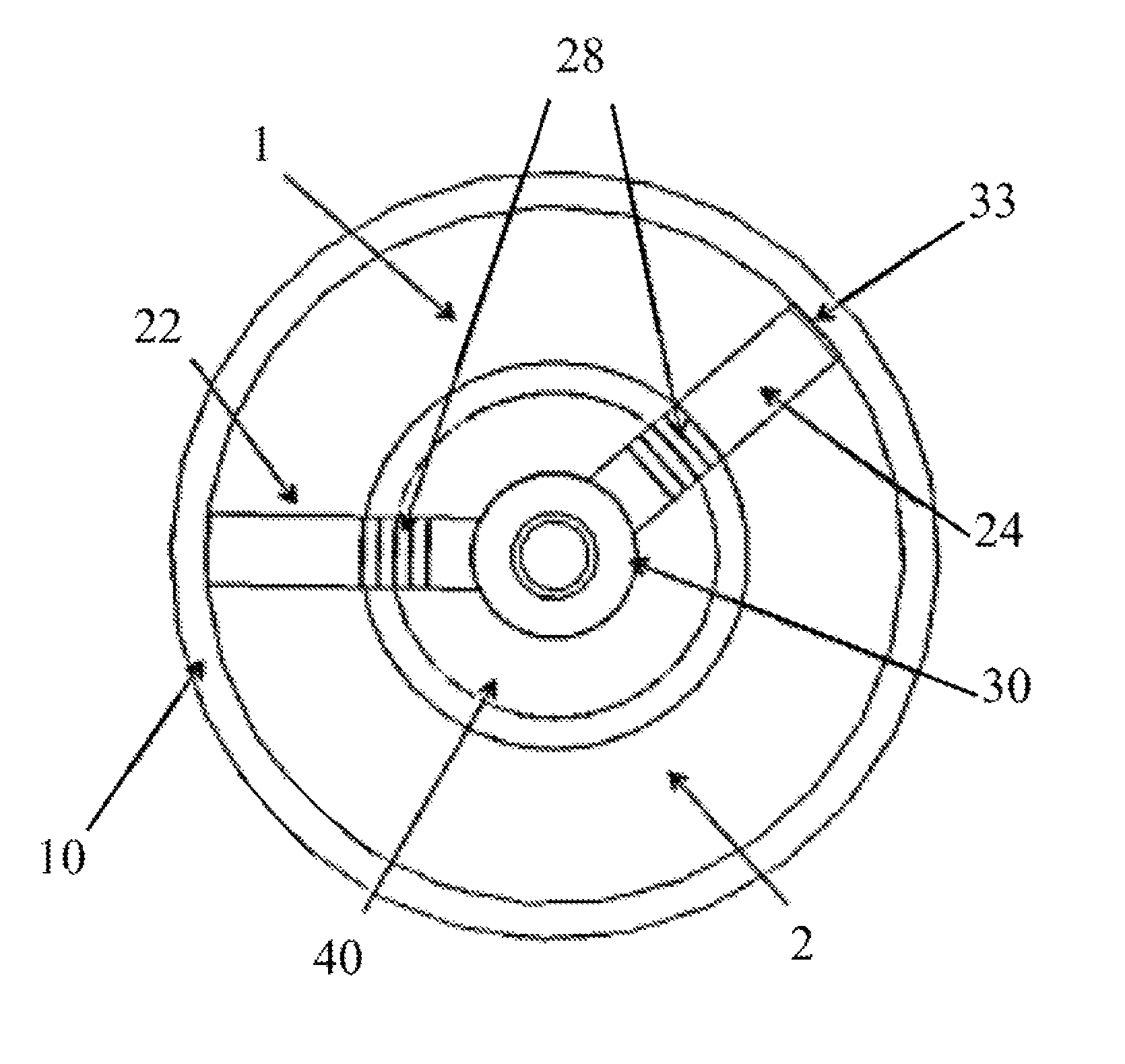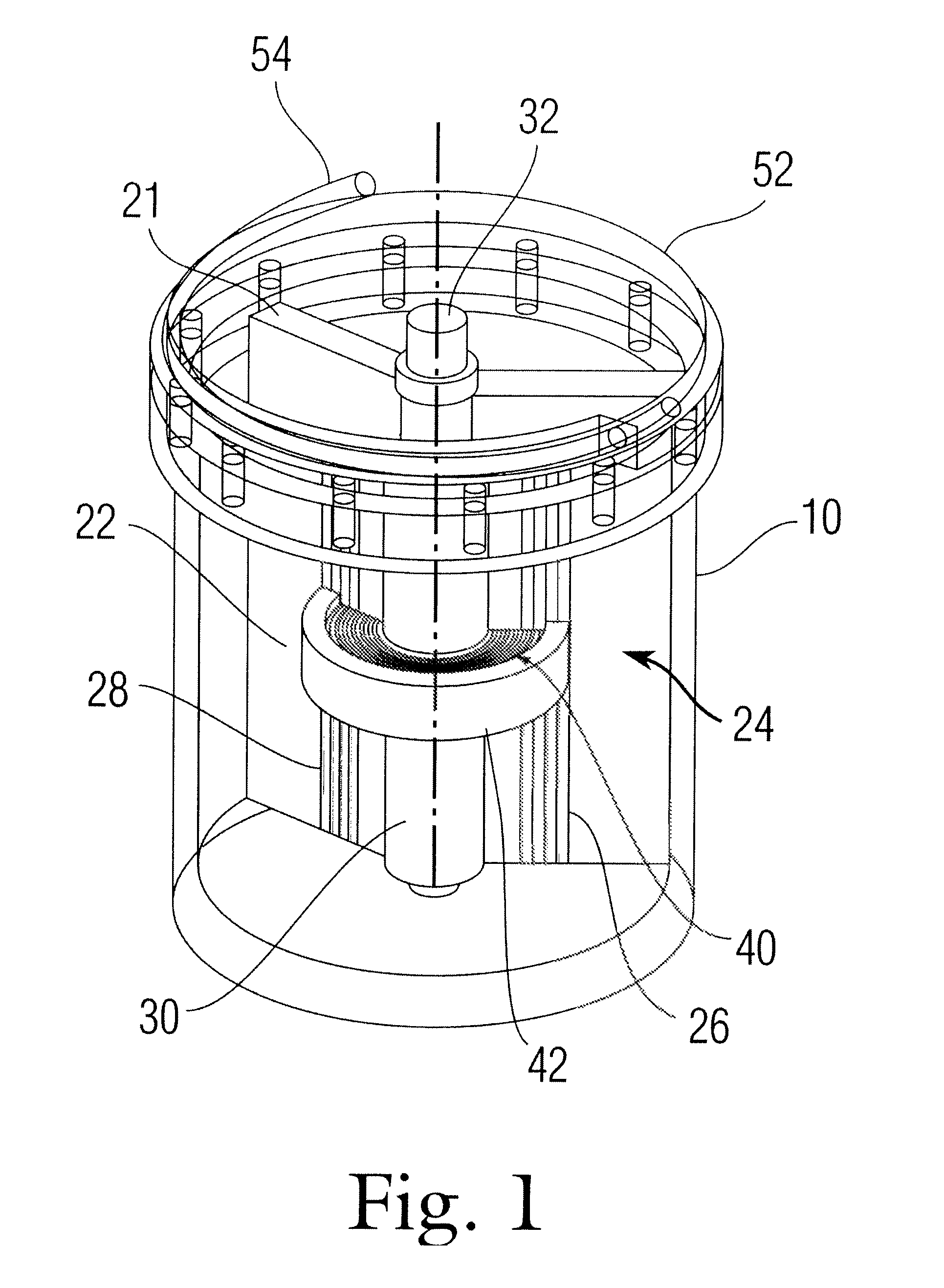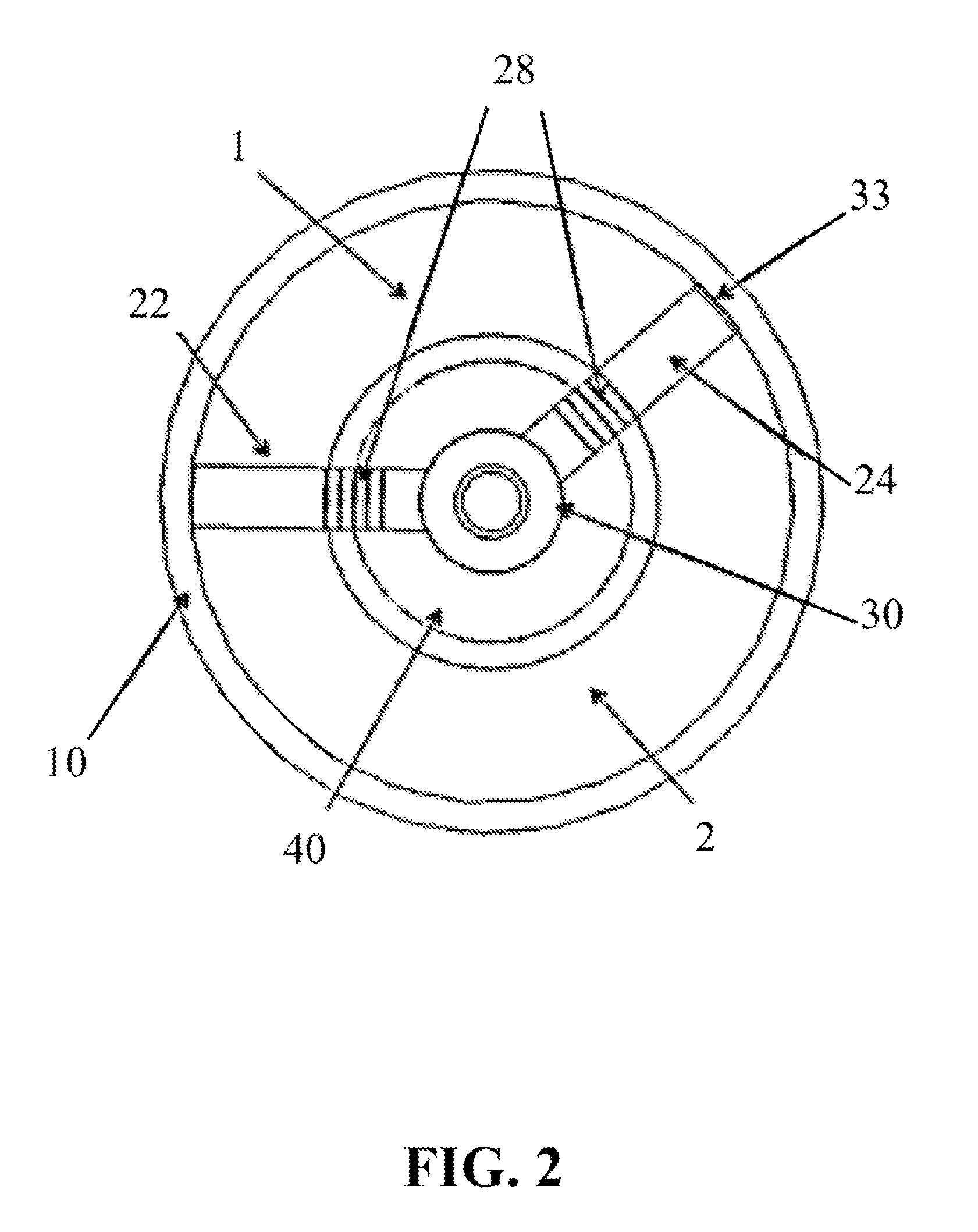Rotary vane magnetorheological (MR) energy absorber
a technology of energy absorber and magnetorheological body, which is applied in the direction of shock absorber, liquid based damper, mechanical apparatus, etc., can solve the problems of inability to automatically adapt the energy absorption of the payload as a function of payload weight or real-time environmental measurements, and the wave-to-hull impact of high-speed watercraft. to achieve the effect of maintaining a compact profile and increasing the damper strok
- Summary
- Abstract
- Description
- Claims
- Application Information
AI Technical Summary
Benefits of technology
Problems solved by technology
Method used
Image
Examples
first embodiment
[0032]the rotary vane MREA of the present invention is depicted in FIG. 1. In this embodiment, the MREA comprises a cylindrical damper body 10 defining an internal cylindrical volume containing MR fluid. An internal stator comprising one or more fixed vane structures 22 protrudes radially into the internal volume of damper body 10. A shaft 30 is rotatably mounted in the damper body 10 and traverses the internal volume and one or more rotary vane structures 24 protrude radially from the shaft 30 within the cylindrical volume. In addition, a rotation / linear motion converting mechanism (here a cable reel including a cable reel wheel 52 equipped with a cable 54) is coupled to the shaft 30. Both vanes 22, 24 are rectangular structures seated radially across the cylindrical volume, and the rotary vane 24 is driven by the center shaft 30 which is made of magnetic steel. Each vane 22, 24 is made of vertical magnetic steel plates 26 arranged in columns and mounted in parallel within a non-ma...
second embodiment
[0036]Referring to FIG. 3, the invention is a rotary vane MREA with an external by-pass valve body 60, rather than internal valve openings 28. This embodiment likewise comprises a cylindrical damper body 10 with an internal cylindrical volume, fixed / rotary vane structures 22, 24, a rotation / linear motion converting mechanism (cable reel 52 and cable 54). The by-pass valve body 60 is external to body 30 and forms a conduit in which a rectilinear flow valve 62 is embedded. The vane structure may be identical, similarly including a fixed vane 22 and a rotary vane 24. Both vanes 22, 24 are rectangular and seated across the radial direction of the cylindrical volume, and between the fixed and rotary vane 22, 24 is a center shaft 30. The vane structures 22, 24 and center shaft 30 can be made of light metal materials, but there are no valve openings on or in the vanes themselves (as ref. 28 in FIGS. 1-2). The boundary edges of the fixed vane 22 are integrated with the internal surface of t...
fourth embodiment
[0042]the rotary vane MREA comprises one or more axially-mounted rotary vane(s) mounted on the shaft (rather than radial vanes 24, and a cooperating stator structure, which operate by a shear motion rather than pressure differential. The axially-mounted rotary vane(s) shear through the MR fluid, and shear resistance creates a torque-moment and damping force. A solenoid-induced magnetic field controls the shear resistance to rotation of the axially-mounted rotary vane(s), as before allowing control over the torque moment on rotor and shaft. The torque-moment can be further converted into a linear damping force with a rotary-to-linear motion converting mechanism.
[0043]The fourth embodiment of the rotary vane MREA of the present invention is depicted in the perspective drawing of FIG. 7. In this embodiment, the MREA comprises a cylindrical damper body 10 defining an internal cylindrical volume containing MR fluid. The cylindrical damper body 10 may or may not be equipped (or formed) wi...
PUM
 Login to View More
Login to View More Abstract
Description
Claims
Application Information
 Login to View More
Login to View More - R&D
- Intellectual Property
- Life Sciences
- Materials
- Tech Scout
- Unparalleled Data Quality
- Higher Quality Content
- 60% Fewer Hallucinations
Browse by: Latest US Patents, China's latest patents, Technical Efficacy Thesaurus, Application Domain, Technology Topic, Popular Technical Reports.
© 2025 PatSnap. All rights reserved.Legal|Privacy policy|Modern Slavery Act Transparency Statement|Sitemap|About US| Contact US: help@patsnap.com



